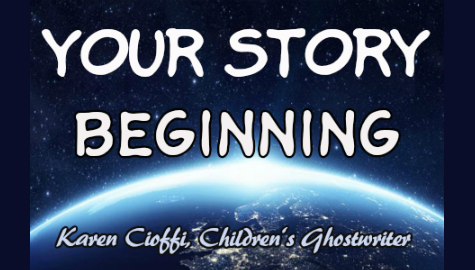
With all the information available online about writing, I still get clients who begin their stories with backstory, boring introductions, or with a number of characters, leaving the reader in the dark as to who the protagonist is.
The beginning of your story, whether a picture book, chapter book, or middle-grade book, is to provide the reader with some key information.
It’s the reader’s first impression of the book. It needs to matter.
Here are three guidelines for starting a story:
- The story should start with the protagonist and set the rules.
You need to establish a connection between the reader and the protagonist quickly.
At the very beginning, the reader needs to know who is taking them on the journey; whose point of view are they being privy to.
It doesn’t need to be action-packed, but it does need to be engaging and set the ground rules and tone.
In my fantasy chapter book, “Walking Through Walls,” the first page establishes the main character, the conflict, and the tone of the story.
The first paragraph reads:
“Wang bound the last bunch of wheat stalks as the sun beat down on the field. Sweat poured from the back of his neck, drenching the cotton shirt he wore. I hate doing this work. He hurled the bundles on a cart. ‘Father, the bales are stacked. I am going home; it is too hot.’”
- Keep the beginning in the present.
Starting the story with something like:
Alicia looked at herself in the mirror as she thought about her life before. She was a hairstylist in a high-end establishment and loved her job. That is, until her boss took on a partner. Things went downhill from there. Having to quit, it took her six months to find another job. And that job was in a low-end place she swore she’d never work at.
The opening paragraph above is considered information dump. It might also be considered backstory. It’s there solely to let the reader know the protagonist’s past.
While some of the information may be important to the story, it shouldn’t be dumped in the beginning.
Instead, you might start it like:
“Hey, Alicia,” called Juan. “Your 3 o’clock is here. I’m sending her back.”
Alicia looked at herself in the mirror. How did this happen? What am I doing in this dead-end job?
Writing coach, Susan Lieurance, says, “Stories lose power when they start with explanation. Readers don’t need to be briefed before they care. Beginning with action—big or small—immediately gives your story energy.”
This brings us to number three.
- Start your story with action.
The latter scene in number two is action-related but doesn’t have to start with dialogue.
You might have the protagonist angry with his best friend.
Josh stood with his arms folded and eyes narrowed as he watched Branden talk to Mia. What’s he doing talking to her? He knows I like her.
OR …
Josh stood with his arms folded and eyes narrowed. “I saw you talking to Mia. You know I like her.”
Branden shrugged. “It’s no big deal.”
“To you, maybe,” growled Josh.
A second scenario might be…
Max looked at the rock-climbing wall. Man, it’s high. His body tensed as he put his foot on the first rock that jutted out. He looked at the crowd that gathered in the gym to watch him. Why’d I accept this stupid challenge?
A third scenario might be…
Wang tied the last bundle of wheat and hurled it into the cart. He wiped the back of his neck, then pulled the cart up the hill. Looking back at his father, who leaned on his shovel, hunched over, Wang mumbled, “This is not the life for me.”
The action doesn’t have to be life or death, but it needs to let the reader get an idea of who the protagonist is. It should give the reader something to latch onto.
Editor Mary Kole of Good Story Company said, “The underpinning of action is conflict.”
In the first scenario, Josh has a problem with his friend.
In the second scenario, Max is afraid. Maybe he’s afraid of not being made fun of if he can’t climb the wall. He doesn’t want to fail in front of others. He may be afraid of being made fun of.
In the third scenario, Wang doesn’t want a fate like his father’s. He doesn’t want the back-breaking work and sweat of tending the wheat fields.
These are short and simple examples, but they should give you an idea of how to create effective beginnings for your stories.
Just remember that your story beginning should make the reader want to know what’s going on. It should motivate him to turn the page.
NEED HELP WITH YOUR STORY?
I’m a working children’s ghostwriter, rewriter, and coach. I can help turn your story into a book you’ll be proud to be the author of, one that’s publishable and marketable.
OTHER HELP I OFFER:
FICTION WRITING FOR CHILDREN COURSE
A guided self-study course and mentoring program.
HOW TO WRITE A CHILDREN’S FICTION BOOK
A DIY book to help you write your own children’s book.
You can contact me at: kcioffiventrice@gmail.com.

2 thoughts on “Your Story Beginning”